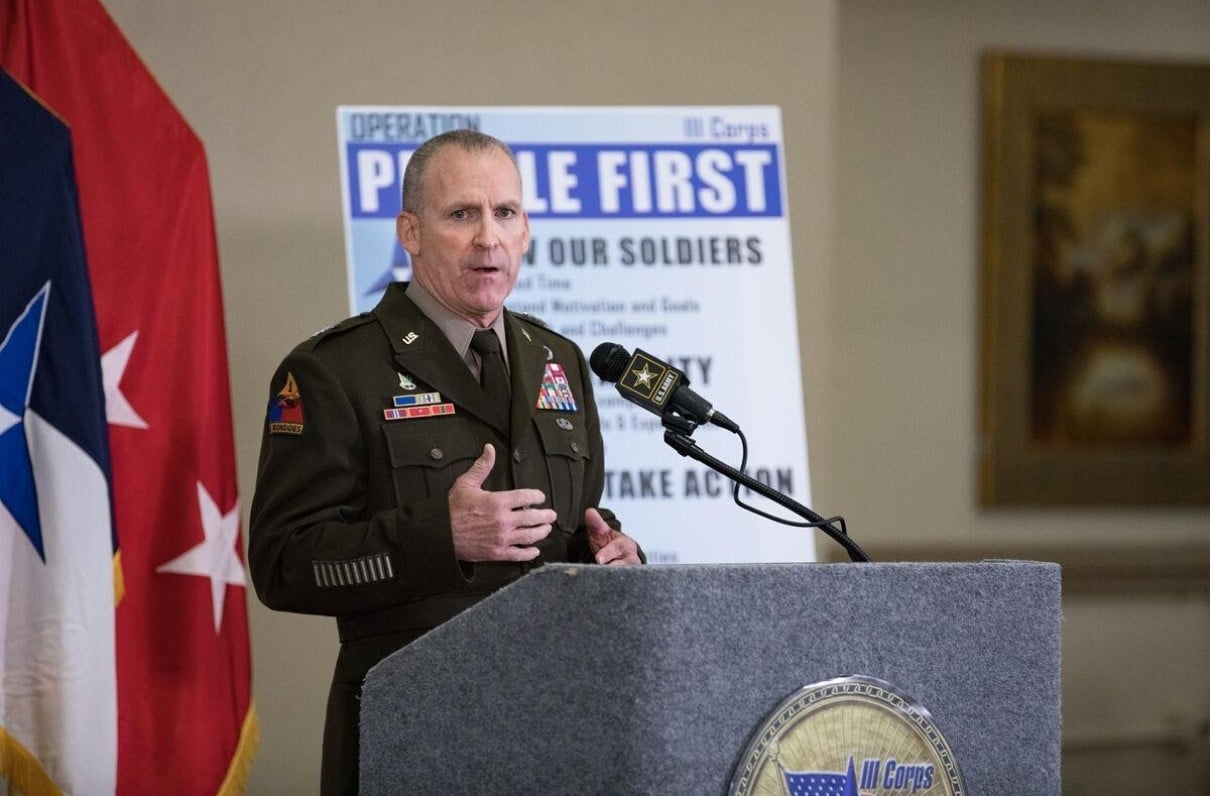The FY 2021 National Defense Authorization Act (NDAA) includes a “Safe to Report” provision designed to protect victims of sexual assault and empower them to report their experiences. The bill would prevent victims from facing punishment for “minor collateral misconduct” – underage drinking, for example – connected to the incident except in aggravating circumstances.
MOAA and The Military Coalition, a group of military and veterans service organizations representing a combined 5.5 million-plus membership, have advocated for the Safe to Report provision, and while its inclusion represents a legislative victory, it won’t change the fact that most servicemembers will not report an incident of sexual harassment or assault.
With the average investigation taking over one year, the current system leaves the victim, the accused, and the commander in legal limbo. The accused remains in their formation and becomes painful evidence to other servicemembers that the system does not work.
Fort Hood Independent Review
Earlier this year, Secretary of the Army Ryan McCarthy identified Fort Hood, Texas, as the installation with the highest rates of violent crime and suicide in the Army. With a platoon’s worth of soldiers lost at Fort Hood and vast media coverage of the tragic murder of Spc. Vanessa Guillen in a secure arms room, a change in course was warranted.
In response, the secretary directed a Fort Hood Independent Review Committee (FHIRC), led by a former FBI investigator. You can read the group’s full report at this link.
The committee testified Dec. 9 to the House Armed Services Subcommittee on Military Personnel, discussing troubled command climate, high crime rates, and a servicewide “structurally flawed” Sexual Harassment and Assault Response Program (SHARP).
“Twenty-eight service members have died at Fort Hood this year,” said Rep. Jackie Speier (D-Calif.), subcommittee chair and co-sponsor of the bipartisan Safe to Report legislation in the House earlier this year. “And it's not just violent crime that's plaguing Fort Hood but unlivable housing conditions, rising incidences of sexual harassment, a failing SHARP program, increased rates of depression, and a bottoming out of morale.”
Some of the figures connected to the Fort Hood review, which looked at 31,000 completed surveys:
- Out of the 507 women soldiers interviewed, investigators found 93 credible instances of sexual assault and 135 credible instances of sexual harassment.
- Investigators reviewed 50 suicide files, finding clear mental health issues.
- The report’s authors offered 70 recommendations for implementation based on nine key findings.
- After the report’s release, 14 senior leaders were relieved or suspended pending further investigation.
Interviews and command climate surveys found long investigations, revictimization, and threat of retaliation make reporting an incident not worth the pain or effort for victims.
Investigators from Army Criminal Investigation Command (CID) and the military justice system were understaffed and overwhelmed, the Fort Hood committee found.
“When the handoff goes from CID to the military justice adviser, sometimes there's a gap of 120 days,” said Chris Swecker, former FBI investigator and FHIRC chair. “You know, 120 days is a long time to wait for the case to move forward.”
With no time standards established to complete current investigations or legal actions, manpower analysts have no way to identify if they have allocated enough Full-Time Equivalent (FTE) positions to meet mission requirements.
[RELATED AT ARMY TIMES: Army CID Is Burned Out and Mismanaged by Military Police Leadership, Special Agents Say]
Speier called the report “a stunning indictment of the leadership of Fort Hood” and pointed to a report in August from the Army Forces Command (FORSCOM) Inspector General’s Office that told the committee “the SHARP Program was being followed, soldiers and leaders knew what to do. Soldiers felt they could report and did report sexual harassment, sexual assault.”
The FHIRC said the FORSCOM investigators did not have the resources to conduct an extensive investigation. Operational tempo was cited as a contributing problem.
DoD’s Wider Program
While these issues have received media attention connected to the Fort Hood incidents and investigations, they are certainly not new concerns.
“‘We’ve got this ma’am; we’ve got this.’ They say it every year,” said Sen. Kirsten Gillibrand (D-N.Y.) in response to a DoD official’s testimony during a July 6 hearing. “They don’t have it, and they haven’t had it for the last seven years we have been focused on this very issue.”
Additional problem areas revealed by a Defense Advisory Committee on Investigation, Prosecution, and Defense of Sexual Assault in the Armed Forces (DAC-IPAD) hearing with retired military judges included troublesome trends in talent management, inadequate manning, and dearth of medical professionals available to testify in court. DAC-IPAD is charged with evaluating assault cases.
“As a military judge, I didn’t have a law clerk, I didn’t have the staff or medical experience to review records.” said a senior judge on the panel.
Resources such as expert testimony and medical record analysis are critical to a sexual assault conviction. “The military medical system is overstressed with patient care. There are not enough doctors, and docs are stressed with patient care and do not have time to testify — many in the Navy medical system do not want to be involved” stated a senior judge.
The 2017 report found 44.4% of penetrative sexual offense charges referred to trial by general court-martial were immediately dismissed over insufficient evidence, and “the decision to refer charges to trial by general court-martial in the absence of sufficient admissible evidence to obtain and sustain a conviction has significant negative implications for the accused, the victim, and the military justice process.”
The Way Ahead
Mandatory training has proven ineffective to prevent harassment and assault. Timely investigations that result in holding perpetrators accountable via conviction, administrative separation, or other administrative action are needed.
“Sexual assault is a crime while sexual harassment has been treated like a speeding ticket,” said Under Secretary of the Army James McPherson. “We know that sexual harassment is a method for predators to groom someone for assault.”
Current policy that requires initiating immediate separation actions for alcohol or drug incidents is an example of how DoD has changed its culture since the 1980s. MOAA and The Military Coalition will continue to advocate for the currently serving through improved standards and resources. You can learn more about these efforts at this link.
MOAA Knows Why You Serve
We understand the needs and concerns of military families – and we’re here to help you meet life’s challenges along the way. Join MOAA now and get the support you need.

